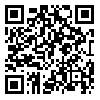BibTeX | RIS | EndNote | Medlars | ProCite | Reference Manager | RefWorks
Send citation to:
URL: http://jdisabilstud.org/article-1-1705-en.html
2- Assistant Professor, Department of Psychology, Islamic Azad University of Gorgan, Gorgan, Iran
Abstract
Background & Objectives: Bipolar disorder refers to severe mood swings over weeks and months, ranging from high–intensity shingles or irritability to depression. Cognitive behavioral therapy can improve the clinical features of bipolar I patients. Besides testing the validity of dysfunctional beliefs and improving problem–solving and communication skills, behavioral–cognitive treatment in patients with bipolar disorder emphasizes teaching methods for identifying early signs and initiating disease episodes. Another relatively new psychological treatment in the treatment of bipolar disorder is schema therapy, which besides insight, emphasizes cognitive, emotional, interpersonal, and behavioral changes. Due to the severity of the disease, the interventions that target the entire patient's body are likely to succeed. This study aimed to compare schema therapy and cognitive behavioral therapy in patients with bipolar I disorder.
Methods: The method of this study was a quasi–experiment with a pretest–posttest design with a control group and a three–month follow–up period. The study's statistical population comprised all patients with bipolar disorder type 1 Living in Gorgan City, Iran, in 2018 who had medical records in health centers. A total of 24 participants, 19 men and 5 women, were selected by purposive non–random sampling method. Then the sample group members were randomly divided into two experimental and one control group (each group 8 persons). The inclusion criteria were as follows: psychiatric diagnosis of bipolar I disorder, a history of bipolar disorder based on medical records and history of hospitalization, absence of acute disorder during the intervention, patient's symptoms stability over the past three months, appropriate adherence to treatment and medication use during the intervention and before, aged 25 to 55 years, no other acute or chronic physical, psychological, drug or drug abuse, consent from participating in the project, and no psychological intervention during the project. In the absence of any of these conditions, participants were excluded. The data collection tool was the Bipolar Depression Rating Scale (BDRS) (Berk et al., 2007). One of the experimental groups underwent ten 70–minute sessions of schema therapy, and the other experimental group under ten 70–minute sessions of cognitive–behavioral therapy. The duration of the sessions was selected based on studies of therapeutic protocols. The control group received only drug treatment and no psychological treatment during the study. Experimental groups received psychological interventions and continued drug therapy. The pretest was administered to all three groups before the intervention, and the posttest was administered one week after the end of the sessions. Finally, after a 3–month follow–up period, the tests were again administered to all three groups. Average and standard deviation indices were used to analyze the data at the descriptive statistics level. At the inferential statistics level, variance analysis with repeated measures was used at a significance level of 0.05. All analyses were done using SPSS version 23 software.
Results: The results showed no significant differences in the improvement of physical symptoms (p=0.316) and psychological symptoms (p=0.289) between experimental groups of schema therapy and cognitive behavioral therapy and the control group during the pretest, posttest, and follow–up stages. The mixed symptoms analysis showed a significant difference in improving these symptoms in all three stages of pretest, posttest, and follow–up between groups (p=0.038).
Conclusion: Based on the findings of this study, the emphasis of schema therapy on emotions and the therapist–patient relationship, using healthy mindfulness exercises and efficient alternative schemas, and indirectly addressing negative thoughts and feelings from the outset have made this treatment more acceptable to the patients.
| Rights and permissions | |
 |
This work is licensed under a Creative Commons Attribution-NonCommercial 4.0 International License. |





